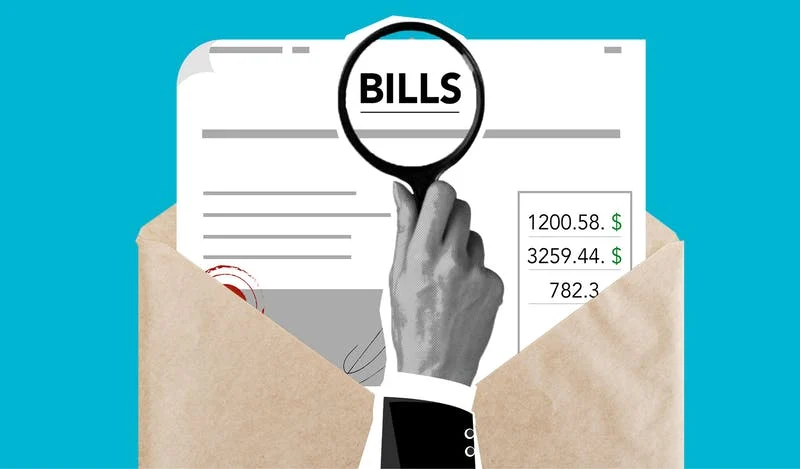
Getting Out of a Deadly Debt Spiral Is Not Very Complex

How any Debt Spiral Begins?
Debt is an obstacle for achieving financial goals. The Federal Reserve Bank confirms Americans collectively owed $14.56 trillion in debt by end-December 2020. With credit cards, mortgages, student loans, and car loans the spiral of debt evolves. Achieving financial stability is challenging but try breaking the debt cycle forever. Both the debt build-up and breaking it, takes much time and patience. Ending debt build-up needs a debt repayment plan. Debt relief services do help but rarely offer identical services. Debt begins with student loans with 43 million Americans having student loan debts, with average balances under $40,000. Taking loans compromise your personal balance sheet.

Source: Pexels
Studentplus loans belong to your parents but any student loans co-signed, belong to you equally. Credit card debts help cover daily living costs as you begin your career. While loans accrue interest, credit cards charge higher interest rates than student loans, sinking you deeper into debt. To commute to work a car loan follows. A home mortgage comes next. The income dedicated for monthly payments becomes overwhelming. To reduce the burden, debt consolidation is done by bundling together all debts and refinancing them at lower interest rate but most people end up deeper in debt; as soon as monthly payments decline, spending increases.
Break the Cycle of Debt with a Debt Repayment Strategy

Source: Pexels
To escape the debt spiral, stop borrowing money by using no-fee debit card to make purchases. Review your income and expenses to prepare monthly budgets involving suitable lifestyle changes as housing and transportation are major costs. Moving to cheaper homes with a less expensive vehicle or changing to cities with public transit systems, reduces expenses. Cut down discretionary spending and pay cash always. Consider a top-rated budgeting app to make it easier. Calculate monthly amounts to pay towards debt repayment and choose an appropriate repayment method: the debt snowball or the debt avalanche. The debt avalanche requires you to pay off your highest-interest debts first. This will result in the most financial savings over time but if too challenging, try the debt snowball method instead by settling debts with lowest balance first while paying minimum towards other debts.
The Next Steps
Repay debts but stick to your monthly budget, creating monthly financial surpluses, after all monthly bills are paid. Place surpluses in emergency savings account without buying more stuff. If forced to spend money, replace it when possible; ensure money for covering many months’ expenses. Saving an extra $50 for the emergency fund is adequate in high-yield savings account, with minimal banking fees. After debt control and funding the emergency account, consider financial goals like retirement fund or college education fund. Secure help from debt relief services or debt relief companies to explore options for managing /repaying debt, with debt consolidation or debt settlement. Study and compare the best debt relief companies offering services with costs for your situation with upfront fees, without a written agreement about services provided. Avoid debt relief companies making wild promises.
Ultimately, Perseverance Pays Off

Source: Pexels
To break the debt spiral, you need to be patient and an approach that initiates action by sticking to your plan is worth considering. Having taken years or decades to build up outstanding balances, the recovery process will be similarly slow.
More in Investments & Savings
-
`
Celebs and A-Listers who Choose to be Sustainably Stylish
It is awesome to see celebrities flaunting their uber stylish clothes on ramps or on the streets. However, what could be...
April 9, 2024 -
`
Which is the World’s Most Vegan-friendly City? The Answer Will Shock You!
Why has London been declared as the most vegan-friendly city in the world; it’s due to the number of vegan-friendly restaurants...
April 9, 2024 -
`
Mindful Eating – What is It and How to Go About It?
This age-old technique of mindful eating changes the way you think about food and leads to a lifetime of wholesome eating....
January 22, 2024 -
`
Steps to Create a Crowdfunding Project and Secure the Money Needed
Your crowdfunding campaign can be successful if you use tried-and-true tactics. Crowdfunding has exploded in recent years, helping to launch prosperous...
December 18, 2023 -
`
Why The Digital Nomad Lifestyle is Increasing in Popularity
The digital nomad movement is now quite popular, and by the year 2025, 22% of the workforce in the United States will...
December 7, 2023 -
`
Famous Entrepreneurs Want You to Learn From Their Biggest Failures
No one can be an overnight success, as failure is an inevitable baggage on an entrepreneurial journey. Some famous entrepreneurs speak...
December 6, 2023 -
`
Miss your Pet When Traveling? Book These Hotels if You Want a Furry or Feathered Friend Welcoming You at the Lobby
Do you miss your pet, having left him/her behind when traveling? At some hotels, you get your “I-really-miss-my-pet” fix, all thanks...
December 6, 2023 -
`
These are Some of the Greatest Inheritances Recorded the World-over
The Bloomberg Billionaires Index has listed the 25 richest families around the globe, and control over 1 trillion dollars of the...
December 5, 2023 -
`
Stunning Hotels Around the World Which Even Celebrities Fawn Over
Where do Celebs vacation? In certain aspects, superstars are similar to us, but not when it comes to vacation lodging. Stars...
December 1, 2023















You must be logged in to post a comment Login